Time Travel
Time travel is a fascinating subject. Who never once wished to travel back in time and meet someone again, or fix/avoid something, or go to the future and see how we all turn out? Yeah, some people say this is already possible.
But what really is time travel? To put it simply, time travel is the ability to move from two different points in time (past or future). The first person to write about this theme was H. G. Wells, in his book, "The Time Machine", which was adapted as a movie two times:
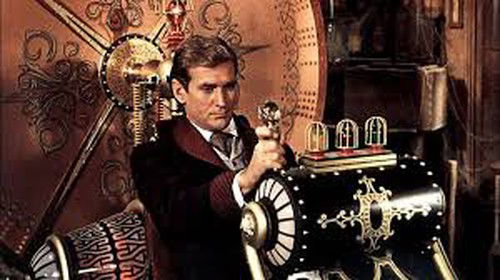
His book was the first science fiction book to discuss the concept of time travel by using a "machine" with which someone could travel through time on purpose and accurately - that is, they could choose to which time they would travel.
However, for many of us, whenever someone brings up time travel, we think of the "Back to the Future" trilogy, which is one of the most popular depictions of this theme. Michael J. Fox and Christopher Lloyd were legendary as Marty McFly and Doc Brown.
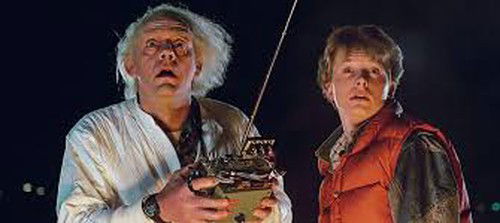
Now it's your turn! Buckle up, because we'll travel through time with That Time You Killed Me!
Game Info
That Time You Killed Me is a board game played with 2 players, for ages 10 and up, by designer Peter C. Hayward. It was illustrated by Jor Ros.
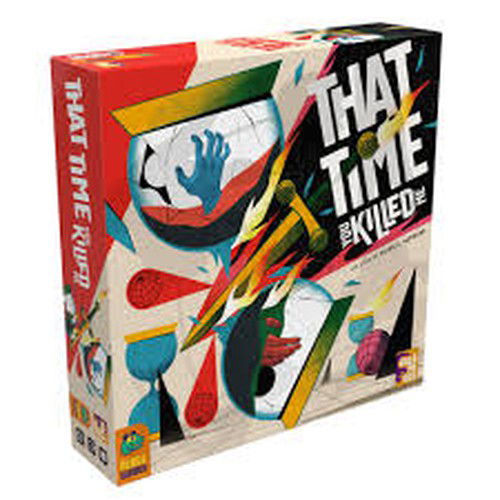
That Time You Killed Me was released in 2021 by Pandasaurus Games. Its basic mechanics are: grid movement, multiple maps, sudden death, and glide/push.
The idea behind the game is that, besides the standard gameplay, which, on its own, is already quite cool, the game comes with 4 different chapters, or scenarios if you wish, which include new components and rules. You can add them to the standard gameplay to increase the difficulty. It's really worth it!
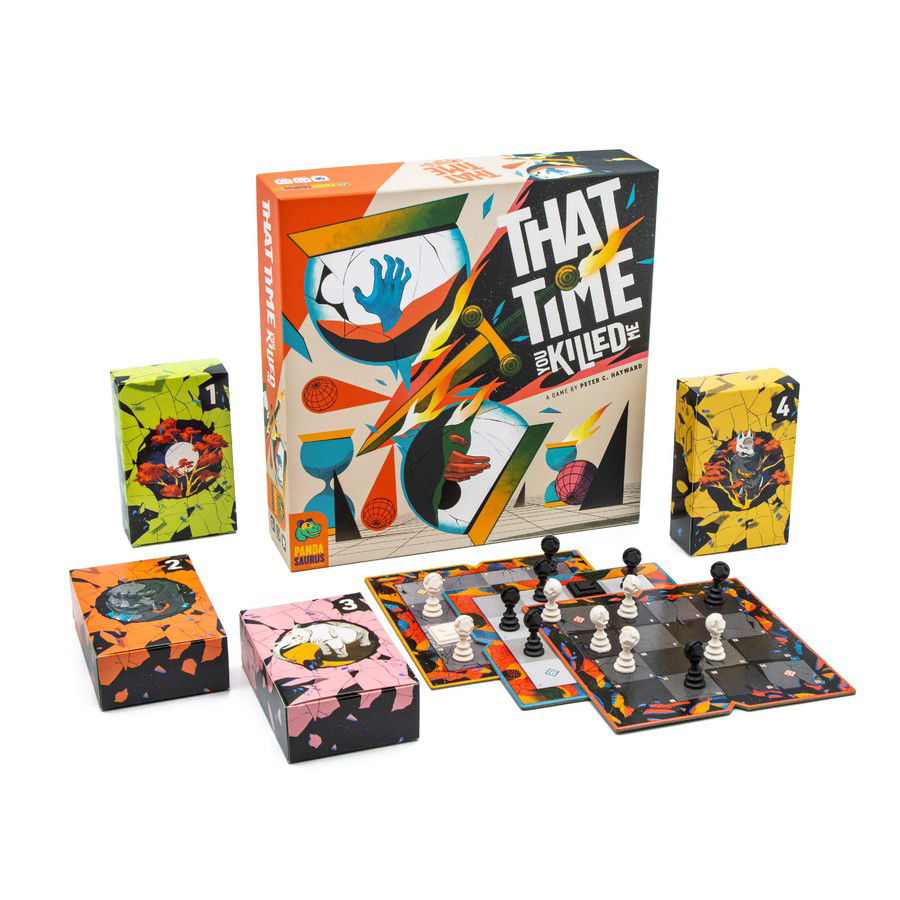
That Time You Killed Me was nominated for multiple prizes since it was released, namely Best 2-Player Game by the Board Game Quest Awards and by Golden Geek. In 2022, it was nominated Game of the Year by SXSW Gaming Awards.
Let's get to it!
The Game
That Time You Killed Me combines everything I like the most: time travel, 1-on-1 matches, chess-like movements, and the best of all: with all the different scenarios, everything you do in the past impacts the present and future.
The story in this game starts when you find out that someone is claiming to be the inventor of time travel, but you were the one who invented it. And, worse yet, they have strewn many copies of themself throughout the past, present, and future. There's only one thing left for you to do: eliminate your opponent! Is it that simple? Of course not! You have to eliminate your opponent in at least 2 eras! And that's the fun of That Time You Killed Me!
The greatest mystery is: was it really you who invented time travel and are trying to erase your impostor from history, or are you the impostor and are trying to erase the original inventor from history to keep their title? All you know is that only the survivor will get the title of "inventor of time travel".
The game in itself is simple, but it's genius! You have three boards: past, present, and future. Each board, which resembles a chessboard, is a 4 by 4 board, that is, each has 16 slots. The player with the white pieces places one of their "copies" on the first position of each of the 3 boards (past, present, and future), and the player with the black pieces does the same, but on the sixteenth position (on all 3 boards).
Now, you'll just have to place your focus token, which indicates where your "copy" is. The player with the white pieces places the copy in the past, and the player with the black pieces places their copy in the future. Each player then has 4 "copies" left, which will come into play later on. That is your setup! Can you believe it?
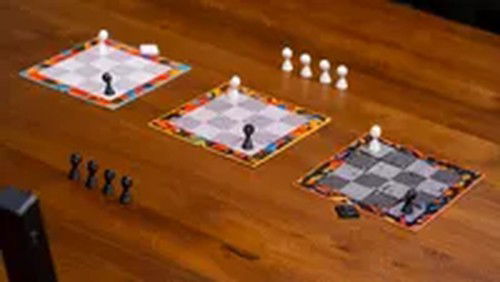
Playing a turn is even simpler, as you only have 3 steps to follow:
The most important part of your turn are your actions. You can move through up to 2 grids orthogonally, and that's how you'll be able to push and even squish an opponent. But be careful with a Paradox, which is when two of your "copies" find each other. If that happens, they both die on the spot.
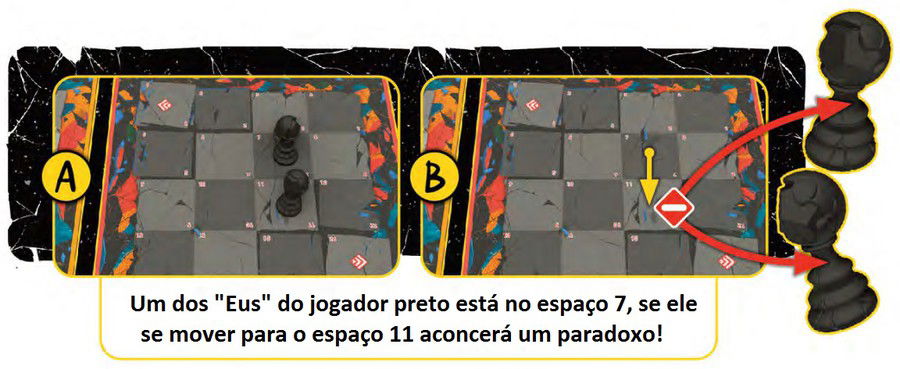
Traveling through time is really cool. If you travel forward (from the past to present, or present to future), you'll be in the next era, but in the same spot as you were in the previous era.
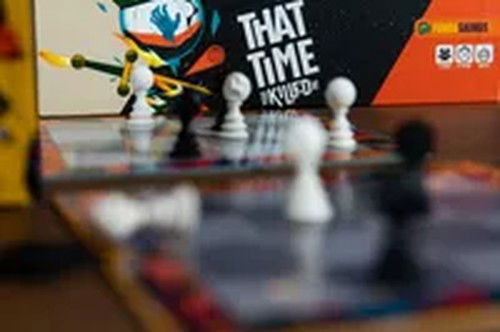
Now, here's the gist of it: traveling back in time (from the future to the present, or present to the past) lets you leave a copy in the era you were in, and that's how you'll get more copies of yourself. Keep in mind you only have 4 copies, so use them wisely!
After taking your two actions, whatever they are, change your focus token to another era, and you're set!
That's a turn in That Time You Killed Me!
This tactic and strategic "cat and mouse" gameplay is really fun. You're hunting your opponent, but you're also being hunted by them! Whoever best uses their copies and dodges them in the past, present, and future comes out alive and is named the inventor of the time machine!
End of the Game
Your goal is to slay your opponent in at least two eras in the timeline. This means that, if your opponent only has copies in one era (or no copies at all) at the end of the turn, you'll win on the spot.
It's that simple!
Strategic Tips
Comparing That Time You Killed Me to chess is natural, particularly when you play it. And that's why it's so great, because you'll have 3 boards to manage at the same time, that is, past, present, and future. So, it's really cool, as it involves a lot of strategy.
As your focus token is determined by your setup, you'll start by playing in the era it is in. It is the only thing you'll be to do first; choose which of your copies you'll activate. That is critical for your strategy. Early on, you only have one copy per era, so it's easy, but, throughout the game, you'll have more choices. Pick the correct copy to take your actions because you'll only be able to take any actions with that copy. Think it through!
After you do that, move on top step 2, that is, take any 2 actions. Now, here are a few great tips: moving and positioning yourself safely is great, but attacking is necessary. The best thing you should do is finding a balance between these two strategies.
Pushing opponents, particularly towards the edges of the board, is important. Putting them into this position to defend themselves will possibly force them to leave one of their "copies" unguarded. You need to hunt, so please remember that!
Travelling forward in time may help you slay an enemy copy, as you'll surround them more easily, but you'll cease to exist in the previous era if you only have one copy of yourself there, so be careful! Keep in mind that if you, at the end of the turn, only have copies in one era, you'll lose on the spot. Make sure that doesn't happen.
Traveling back in time is the most critical strategy because that's when you'll create more copies of yourself. You'll travel back and leave one copy of yourself where you were. That'll let you control a wider area.
I strongly suggest, at least early on, that you never travel forward from the past to the present because you won't have any copies in the past if you do. Create one copy of yourself there before you do that, as this will keep you alive.
Keep an eye on how many copies of yourself you still have, how many you used, and where they are. This management will save your life. That's the difference between winning and losing the game.
Now, for step 3, that is, regarding where you'll put your focus token (so, where you'll act on your next turn), it reveals a lot of information to your opponent, which may follow you. Or, on their turn, they might just go to another spot and prepare a trap for you. Use this to your favor! Bluff, but don't put your copies in danger.
Putting any of your copies in danger means leaving one of them close to the edge of a board, as it can be squished. Leaving more than one copy of yourself in the same era is even more dangerous, as your opponent can use it against you and force them to meet to cause a Paradox. This would destroy them immediately.
So, choose wisely because setting up two copies of yourself to surround an opponent is a double-edged sword. It may help? Yes! But be careful to avoid a Paradox.
Follow these tips and reclaim time travel!
Unboxing, Rules, and Gameplay Videos
Check out this unboxing:
Watch this video on the rules:
See some gameplay:
Teaching Moments
That Time You Killed Me is an excellent teaching tool, much because it provides the same benefits as chess, most notably focus, planning, and decision-making. Besides, obviously, spacial awareness, and, in this case, even time awareness, as you'll have to control 3 boards simultaneously.
I'll stress that, like chess, still, That Time You Killed Me is complex and relies heavily on brain power. Playing it encourages your math skills and critical thinking, besides, of course, creativity. You'll need all of these skills to finish the game.
You'll also need a lot of focus; taking care of one board is already hard enough, so imagine three. Furthermore, be careful with your planning and decision-making, as they're crucial to have any success in this game.
All of this is a great workout for your brain. You'll need all of these skills throughout your life, so, the earlier you learn them the better. You'll work on your math skills as you manage your copies throughout the entire game, and use your critical thinking when you decide when and how to use them. Then, you'll obviously use all your creativity to take all actions as optimally as possible.
That Time You Killed Me is a great game! It demands a lot of focus, strategy, and decision-making!
I strongly recommend That Time You Killed Me for your collection!









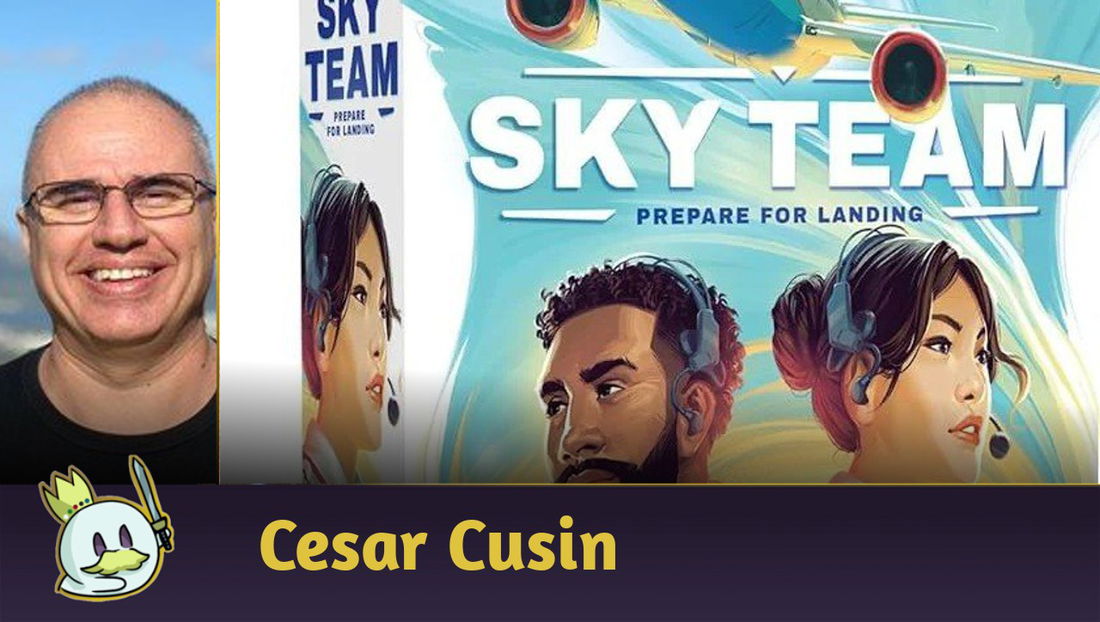
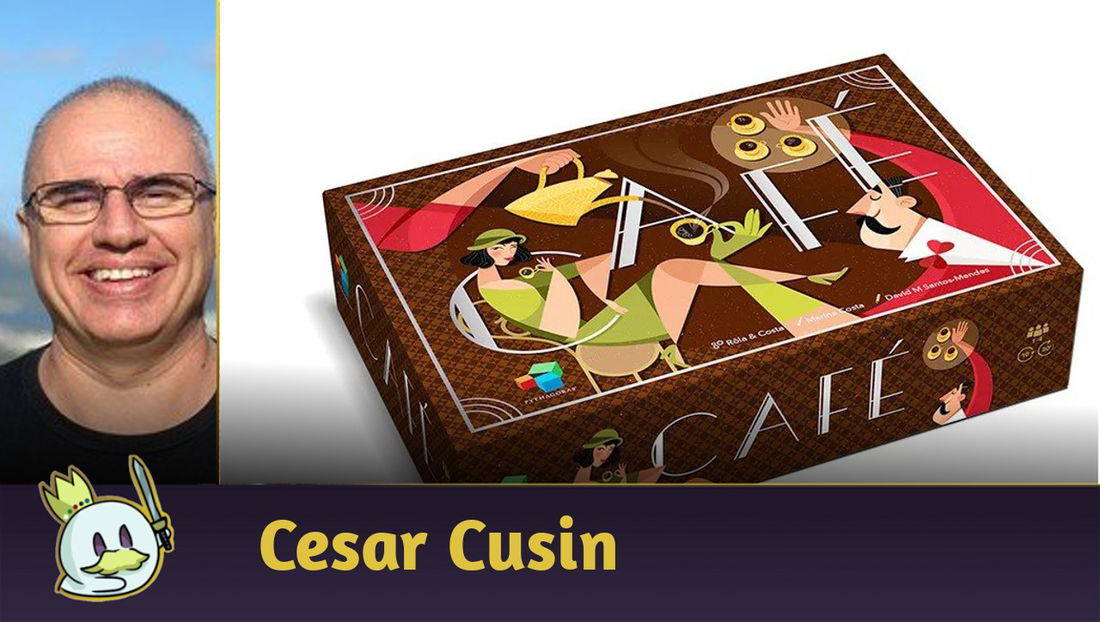



— Comentários 0
, Reações 1
Seja o primeiro a comentar